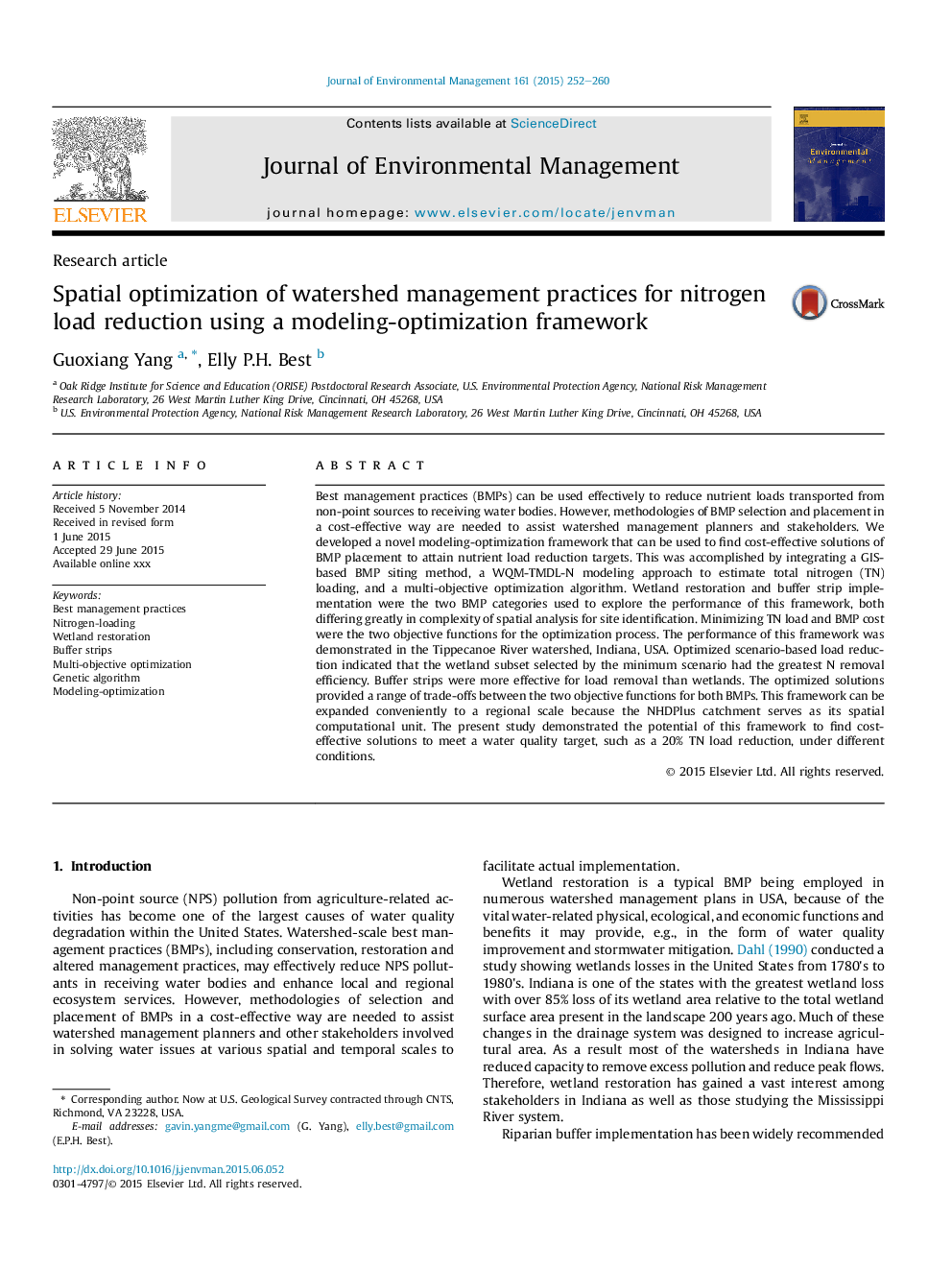| Article ID | Journal | Published Year | Pages | File Type |
|---|---|---|---|---|
| 7481752 | Journal of Environmental Management | 2015 | 9 Pages |
Abstract
Best management practices (BMPs) can be used effectively to reduce nutrient loads transported from non-point sources to receiving water bodies. However, methodologies of BMP selection and placement in a cost-effective way are needed to assist watershed management planners and stakeholders. We developed a novel modeling-optimization framework that can be used to find cost-effective solutions of BMP placement to attain nutrient load reduction targets. This was accomplished by integrating a GIS-based BMP siting method, a WQM-TMDL-N modeling approach to estimate total nitrogen (TN) loading, and a multi-objective optimization algorithm. Wetland restoration and buffer strip implementation were the two BMP categories used to explore the performance of this framework, both differing greatly in complexity of spatial analysis for site identification. Minimizing TN load and BMP cost were the two objective functions for the optimization process. The performance of this framework was demonstrated in the Tippecanoe River watershed, Indiana, USA. Optimized scenario-based load reduction indicated that the wetland subset selected by the minimum scenario had the greatest N removal efficiency. Buffer strips were more effective for load removal than wetlands. The optimized solutions provided a range of trade-offs between the two objective functions for both BMPs. This framework can be expanded conveniently to a regional scale because the NHDPlus catchment serves as its spatial computational unit. The present study demonstrated the potential of this framework to find cost-effective solutions to meet a water quality target, such as a 20% TN load reduction, under different conditions.
Keywords
Related Topics
Physical Sciences and Engineering
Energy
Renewable Energy, Sustainability and the Environment
Authors
Guoxiang Yang, Elly P.H. Best,
